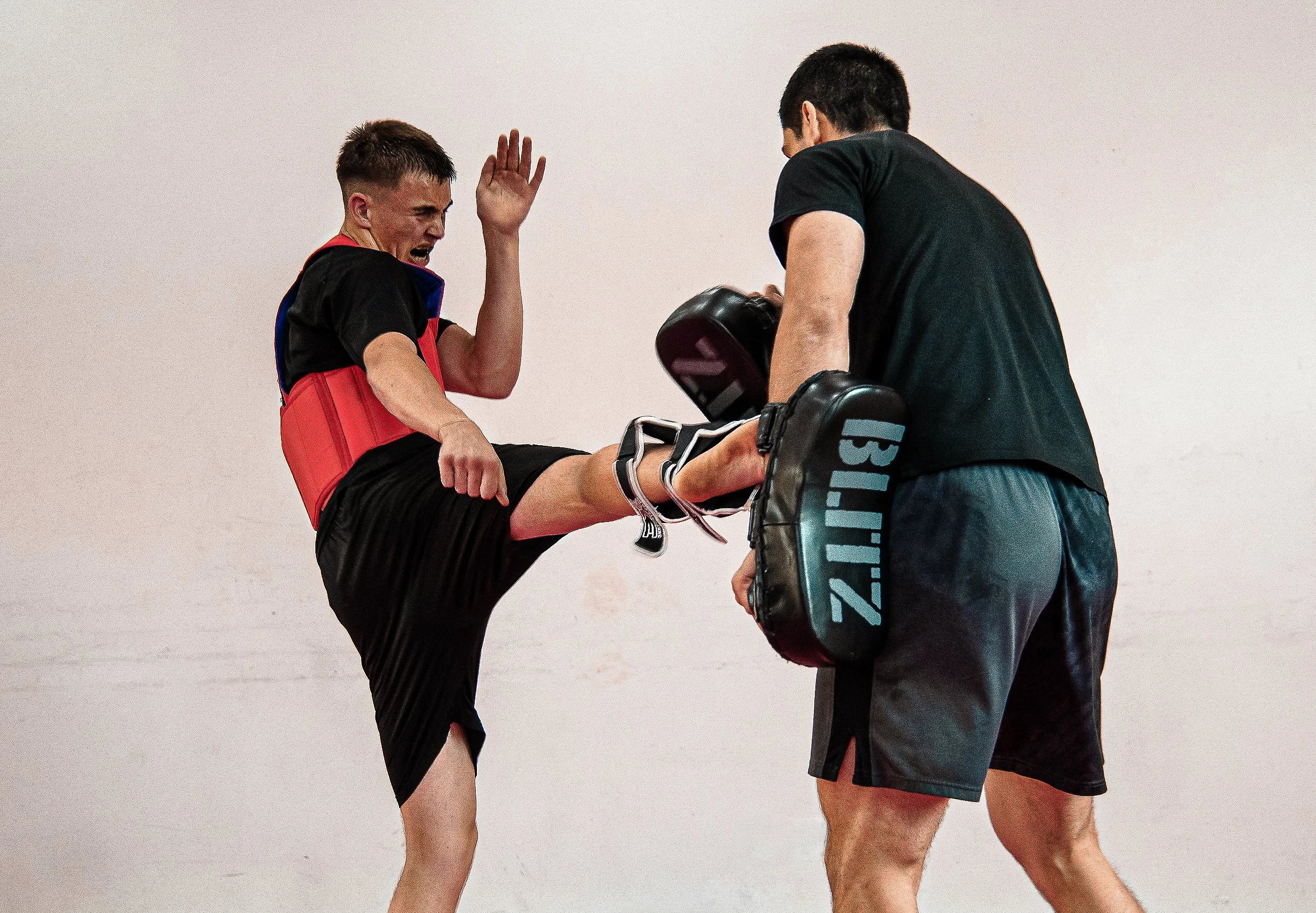The Science of Kickboxing: Understanding Biomechanics and Physiology
Introduction
Sanda kickboxing is a dynamic and fast paced combat sport. It is one of the few martial arts styles that successfully combines wrestling and kickboxing to create a well-rounded fighter and martial artist. It's not just about throwing punches, kicks, and wrestling techniques randomly; there's a science behind it. In this article, we'll delve into the biomechanics and physiology involved in Sanda kickboxing, highlighting how proper technique and conditioning play a crucial role in achieving success in this sport.
Biomechanics in Kickboxing
Biomechanics is the study of how the body moves and the forces involved in those movements. In kickboxing, mastering proper biomechanics is essential for generating power and preventing injury.
Stance and Balance
Your kickboxing journey starts with the right stance. Stand with your feet shoulder-width apart, one foot slightly ahead of the other. This provides a stable base, allowing you to move efficiently and maintain balance. Keep your weight evenly distributed between both legs. If you are right-handed your left leg will be forwards and right leg will be forwards if you are left-handed (this is known as orthodox or southpaw respectively). Remember Sanda Kickboxing has takedowns and wrestling techniques so your stance will be wider than in most kickboxing styles.
Guard
There are many different types of guard but the most basic has your fists on your head with your thumbs on your eyebrows with elbows pointing towards the floor. Your guard is your first line of defence and fundamental to your Sanda kickboxing and is usually one of the things beginners and even sometimes intermediate students struggle to master.
Striking Techniques
Proper technique in kickboxing involves using your body as a kinetic chain. This means generating power from your legs, through your hips, and into your fists or feet. Key points to remember:
Use your hips: Rotate your hips when throwing punches or kicks to maximize power. Don’t lose your base and push off your feet generate power from the floor.
Punches: Keep your arms extended and elbows slightly bent for jabs and crosses. Hooks and upper cuts use more rotation than straight punches and arms stay bent.
Kicks: Snap your kicks back quickly to maintain balance and be ready for the next move. This applies for all techniques, always reset after throwing a combination or technique.
Remember all techniques must come from a strong base/stance.
Wrestling
Wrestling is all about using your body's mechanics to your advantage. A skilled wrestler knows how to position their body correctly, utilizing both their skeletal and muscular systems to gain maximum leverage over their opponent. Additionally, they exploit the natural weaknesses of the human body to execute throws and manoeuvres. In essence, wrestling is the perfect blend of biomechanical strength pitted against the inherent weaknesses of our anatomy. Let's break down how this fascinating sport works.
Posture and Alignment: The foundation of wrestling lies in maintaining the right posture and alignment. Your stance and how you position your body are crucial. It's about staying balanced, ready to move, and in a position to strike or defend.
Leverage: To excel in wrestling, you need to grasp the concept of leverage. By using your muscles and bones in unison, you can gain maximum force while minimizing the effort. Leverage allows a wrestler to overpower their opponent or resist being taken down.
Exploiting Weaknesses: Effective wrestling techniques involve identifying and capitalizing on the human body's inherent weak points. Holds, and throws are designed to put pressure on these vulnerable areas, making it difficult for your opponent to escape.
Biomechanics in Action: When you execute a throw or a wrestling move with precision, it's like a symphony of biomechanics in action. Your body's strength is pitted against your opponent's weaknesses, making the difference between a successful takedown and a missed opportunity.
In wrestling, it's not just about brute force; it's about using your knowledge of biomechanics and human anatomy to outmanoeuvre your adversary. A well-executed throw in wrestling is a testament to the art of leveraging your strength against an opponent's natural weaknesses.
Timing and Distance
Timing and distance are crucial in kickboxing. To land a successful strike, you need to gauge your opponent's movements and keep the right distance. Maintaining a safe distance when you're not attacking is equally important to avoid getting hit or drawing an opponent into a counter. Because of the wrestling in our style fighter tend to start further away than in styles such as Muay Thai and K1 as the closer one gets the easier it is for a wrestler to shoot in for a takedown or clinch and throw. Remember the person who controls the range controls the fight.
Physiology in Kickboxing
Understanding the physiology of kickboxing involves knowing how your body responds to the demands of this high-intensity sport.
Cardiovascular Endurance
Kickboxing is a physically demanding sport that requires a strong cardiovascular system. Training your heart and lungs for endurance is vital to keep up the pace during rounds. Incorporate aerobic exercises such as running and skipping into your training routine.
Muscle Strength and Endurance
Your muscles play a significant role in generating power and withstanding the demands of kickboxing. Incorporate strength training exercises to build the muscles needed for powerful strikes and quick movements. Additionally, focus on endurance exercises to sustain your strength throughout the fight.
Flexibility and Range of Motion
Being flexible can help you execute various kicks and strikes more effectively and reduce the risk of injury. Incorporate stretching and mobility exercises into your training to help improve your range of motion.
Mental Toughness
Physiology isn't just about the body; it's also about the mind. Mental toughness is essential in kickboxing. You must stay focused, control your emotions, and remain resilient throughout your training journey and fight. (read more about mental toughness in this article Mental toughness )
Conclusion
Sanda kickboxing is not just about throwing punches, kicks and executing wrestling techniques; it's a science that combines biomechanics and physiology. Proper technique and conditioning are the keys to success in this exciting sport. By mastering the biomechanics of stance, balance, striking, timing, and distance, and understanding the physiology of cardiovascular endurance, muscle strength, flexibility, and mental toughness, you can become a well-rounded Sanda kickboxer and martial artist. So, step into class or the ring, armed with knowledge, and embrace the science of kickboxing on your journey to personal victory.





